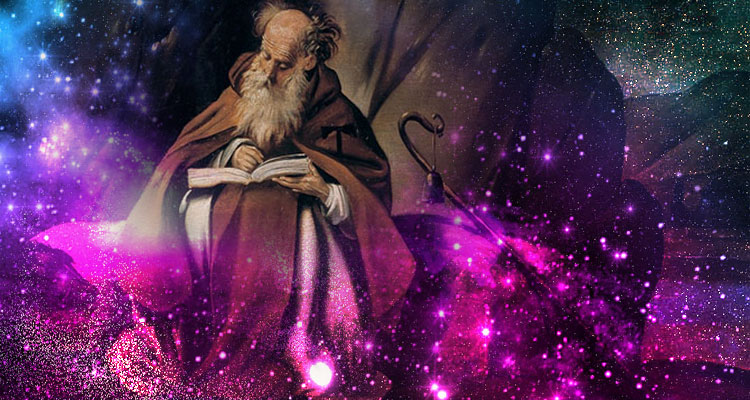January is the month of Capricorn whose cycle ends on January 20 when the Sun enters Aquarius.
Capricorn is, as we have already described (see Solstice 2017) the energy of maturity, realization, sobriety, concretion. Being at the top of the zodiac, House X, the social institution predominates in this energy, what is expected of the individual, the super ego and the expectations about the achievements. This is why its inner side is tense, strict, restricted, bitter, gray, lonely and austere at the same time that outward can be ambitious, implacable, materialistic and authoritarian. The figure of Capricorn is truly mysterious and contradictory, like the month that rules. It is strange that in this festive moment of the year the Sun is in such a happy little sign, right?
However, we must also talk about the mystical function of Capricorn, perhaps its less explored side linked to the figure of this month’s Saint: San Antonio the hermit. In the history of states and peoples, the active man, the military man, the politician, scales the foregrounds and the contemplative being only leads a hidden life in the shadows, without fame and without glory. However, their insights and experiences end up giving meaning to social life. And that is the message of Capricorn. That is when the legendary life of Saint Anthony can be analyzed in an archetypal key to decipher the deepest spiritual message within this Christian symbol. Here we go:
Antonio was born around the year 251 in Kome, in the center of Egypt, son of wealthy parents, spoiled and abandoned to the whims of his desires and cravings. This situation changed suddenly when his parents died leaving him entirely in charge of his family assets and in charge of his younger sister (Virgo). The word here is the administrator of the material world. Absorbed in this activity and lost in the material world one day he heard the word of God through a preacher and was deeply moved and called to spiritual retreat. He abandoned all his property and left his sister in a convent. He was accepted into a community of hermits who taught him the ascetic techniques of the body and the spirit matured for centuries in different spiritual traditions. By day he cultivated a plot in the desert to feed himself, at night he prayed and sang the psalms. He became enlightened through meditation and came to be called by his brothers “God’s favorite” and thanked heaven that this young man would continue the tradition of the hermits, almost condemned to disappear. Mystical visions and meditative states are not easily achieved. He had to go through the hell of his own psyche: all kinds of darkness, tortuous thoughts and melancholy; then his desires, his ego and his vanity tormented him. So he found again in the desert all the vices of humanity that he had wanted to avoid. Because they really live in us.
Two decades he fought for peace, enlightenment, Nirvana, the state of grace of being one with God. He refused for a long time to preach, because life in community was incompatible with the ideal of the hermit. But then he realized that individual lighting did not work if it could not be shared.
The training he proposed to his disciples was severe. The “mona-cato”, as Antonio considered it, was not a soft suffering, an empty meditation or less an escapist attitude, but a difficult, uninterrupted work in the sands of the desert and accompanied by harsh penances for the sins of others. His asceticism was strict, but only thus managed to educate characters who were prepared to face the bloody persecutions of Emperor Maximus Daza.
Not only the hermits sought to approach him. In each caravan came officials, merchants, soldiers and people of every profession, asking for advice and contention.
The legend says that Antonio was already a hundred years old, when he decided to go through all the monastic communities to preach his Christian ascetic doctrine. He died at 105 years old on Mount Kolzim. The effect of his monastic dedication was great. Even many centuries later, his life, described by Athanasius, prompted many to voluntarily leave the world and live only for God.
The figure of the hermit also comes to us through the Tarot in all its versions. This arcane announces situations that must be treated with prudence, humility, good judgment and patience. It is the perpetual seeker, the spiritual master, and may indicate a time of physical or spiritual retreat, the encounter with a teacher, or a counsel received from a wise and prudent person, or from one’s inner self. The letter is related to researchers, libraries and solitary people or depositories of secrets. It also represents the passage of time. Its qualities are discretion, patience and perseverance.
In the inverted position it implies situations of loneliness and depression, and the presence of a false teacher locked in his dogma. It also implies obsessions and narrow-mindedness.





No Comments on "January 17, day SAN ANTONIO, the hermit 251-356 DC"